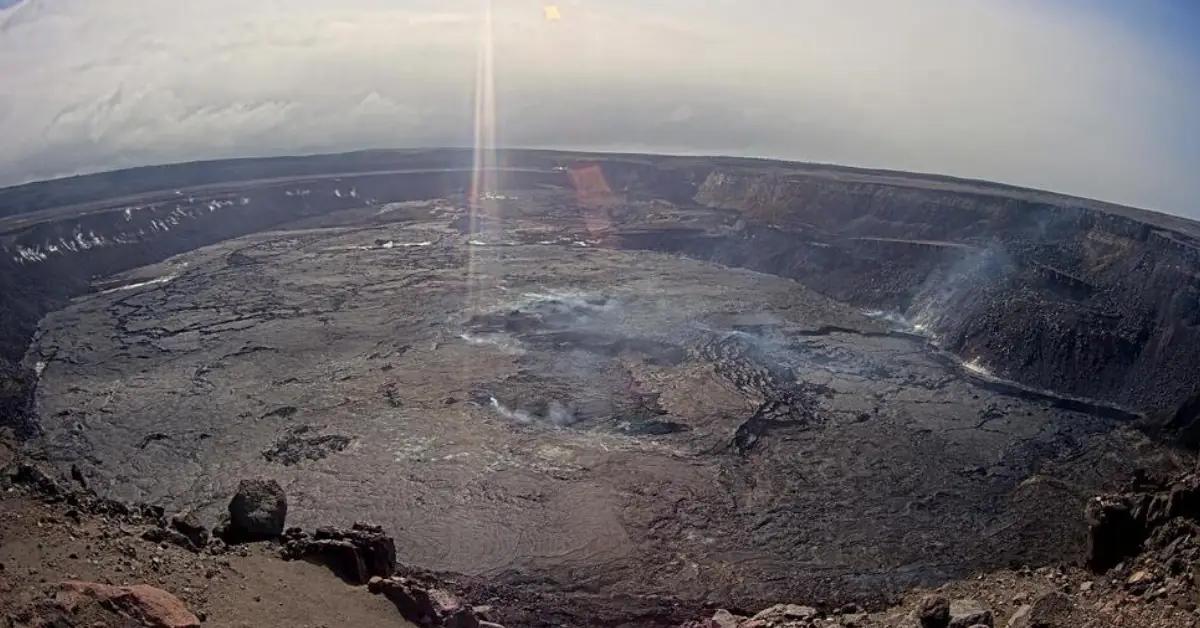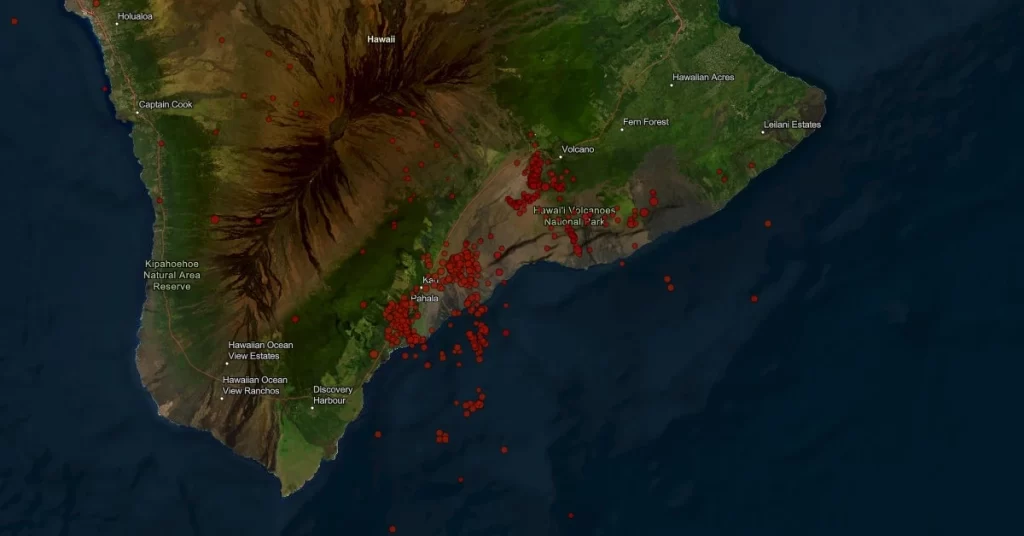Written byTeo Blašković
Wednesday, April 24, 2024

Over the past three weeks, Kilauea volcano in Hawaii has exhibited increased seismic activity, with fluctuations in shallow and deep earthquakes at the summit. The Hawaiian Volcano Observatory reports sustained low sulfur dioxide emissions and continuous monitoring due to this heightened state of unrest.
The Hawaiian Volcano Observatory (HVO) has reported an increase in seismic activity beneath the Kilauea volcano’s summit over the past three weeks. This period has been characterized by fluctuating occurrences of shallow earthquakes ranging from 1 to 4 km (0.5 – 2.5 miles) beneath the south caldera region and deeper seismic events from 5 to 10 km (3 – 6 miles) directly beneath the Kilauea caldera.
While there has been a slight decrease in seismic rates following a significant earthquake swarm last Friday, April 19, activity levels remain elevated.

Over the past three weeks, Kilauea volcano in Hawaii has exhibited increased seismic activity, with fluctuations in shallow and deep earthquakes at the summit. The Hawaiian Volcano Observatory reports sustained low sulfur dioxide emissions and continuous monitoring due to this heightened state of unrest.
The Hawaiian Volcano Observatory (HVO) has reported an increase in seismic activity beneath the Kilauea volcano’s summit over the past three weeks. This period has been characterized by fluctuating occurrences of shallow earthquakes ranging from 1 to 4 km (0.5 – 2.5 miles) beneath the south caldera region and deeper seismic events from 5 to 10 km (3 – 6 miles) directly beneath the Kilauea caldera.
While there has been a slight decrease in seismic rates following a significant earthquake swarm last Friday, April 19, activity levels remain elevated.

Earthquakes detected under Kilauea from March 25 – April 24, 2024.
Credit: TW/SAM, ESRI
On April 8, 2024, an SO2 emission rate of approximately 96 tonnes per day was recorded, consistent with measurements since October 2023, which have remained low. Despite the stable gas emissions, short-lived bursts of low frequency earthquakes have continued, signaling ongoing magma movements within the summit’s subsurface layers.
The summit area, including nearby tiltmeters at Sand Hill and Uēkahuna, showed no significant ground deformation on April 22/23, suggesting the volcano’s summit remains inflated yet stable for the moment. Additionally, seismicity in Kilauea’s upper East and Southwest Rift Zones continues to be low, with no unusual activity reported along the middle and lower sections of the East Rift Zone.
Continuous gas monitoring at stations downwind of Puʻuʻōʻō in the middle East Rift Zone, the site of long-term eruptive activity from 1983 to 2018, has detected negligible SO2 emissions, further indicating a current lack of significant eruptive activity.
Despite the ongoing seismic activity, it remains uncertain whether these indications will lead to an eruption. However, the potential for an eruption at Kilauea’s summit within Hawai‘i Volcanoes National Park, away from major infrastructure, is a scenario under close observation. The HVO continues to monitor the situation daily and will issue Volcanic Activity Notices if significant changes occur.
Local residents and visitors are reminded of the persisting volcanic hazards, such as sulfur dioxide and hydrogen sulfide concentrations, which can remain hazardous even when the volcano is not actively erupting. There are also significant risks from crater wall instability, ground cracking, and rockfalls, especially in areas around Halemaʻumaʻu that are closed to the public due to safety concerns.
References:
1 Daily update for Kilauea volcano – USGS/HVO – April 23, 2024
Featured image credit: USGS/HVO
On April 8, 2024, an SO2 emission rate of approximately 96 tonnes per day was recorded, consistent with measurements since October 2023, which have remained low. Despite the stable gas emissions, short-lived bursts of low frequency earthquakes have continued, signaling ongoing magma movements within the summit’s subsurface layers.
The summit area, including nearby tiltmeters at Sand Hill and Uēkahuna, showed no significant ground deformation on April 22/23, suggesting the volcano’s summit remains inflated yet stable for the moment. Additionally, seismicity in Kilauea’s upper East and Southwest Rift Zones continues to be low, with no unusual activity reported along the middle and lower sections of the East Rift Zone.
Continuous gas monitoring at stations downwind of Puʻuʻōʻō in the middle East Rift Zone, the site of long-term eruptive activity from 1983 to 2018, has detected negligible SO2 emissions, further indicating a current lack of significant eruptive activity.
Despite the ongoing seismic activity, it remains uncertain whether these indications will lead to an eruption. However, the potential for an eruption at Kilauea’s summit within Hawai‘i Volcanoes National Park, away from major infrastructure, is a scenario under close observation. The HVO continues to monitor the situation daily and will issue Volcanic Activity Notices if significant changes occur.
Local residents and visitors are reminded of the persisting volcanic hazards, such as sulfur dioxide and hydrogen sulfide concentrations, which can remain hazardous even when the volcano is not actively erupting. There are also significant risks from crater wall instability, ground cracking, and rockfalls, especially in areas around Halemaʻumaʻu that are closed to the public due to safety concerns.
References:
1 Daily update for Kilauea volcano – USGS/HVO – April 23, 2024
Featured image credit: USGS/HVO
No comments:
Post a Comment